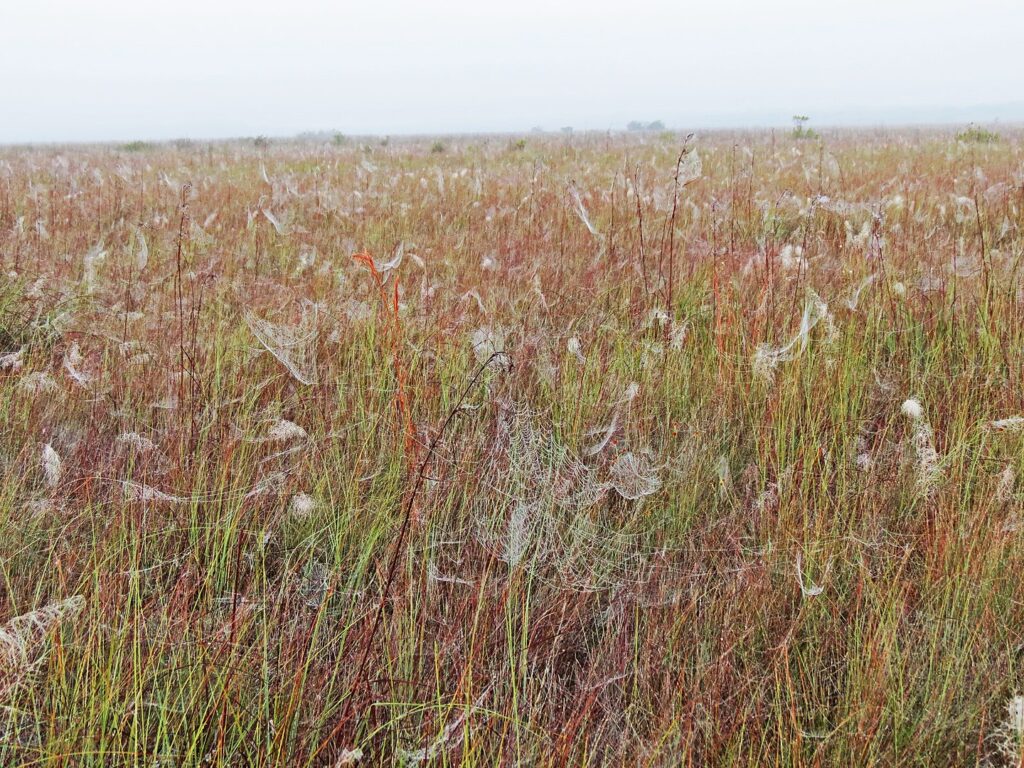Eight legs and two body segments
The arachnids are divided into twelve different orders and include over 85,000 named species. They exist all over the world, and with the exception of the water spider and certain kinds of mite all arachnids live on land. As opposed to insects, the body of arachnids is organised into two segments instead of three. They have no antennae, but they have 8 legs and 2–12 simple eyes. Examples of arachnids include spiders, scorpions, mites, and ticks. Mites exist all over the world and both on land and in water. Some researchers believe that there could be around one million different mite species.
The raft spider is one of the largest spider species living in Sweden. The female's body can be up to 22 mm long.
Photo: Bjorn-S-CC-BY-SA
The Opiliones are an order of arachnids, which usually have very long legs. In addition, the two parts of the body appear to be fused together. In English, these spiders are called "daddy long-legs".
Photo: Fritz-Geller-Grimm-CC-BY-SA
The deathstalker is, like all other scorpions, an arachnid. The species has one of the most dangerous venoms of all scorpions.
Photo: MinoZig-CC-BY-SA
The house pseudoscorpion, is a species of pseudoscorpion, which are also arachnids. This species is found in Sweden.
Photo: Christian-Fischer-CC-BY-SA
The whip spiders are a group of arachnids that resemble scorpions, but lack the stinger. They can move sideways much like crabs.
Photo: Geoff-Gallice-CC-BY
Many may think that common ticks are insects, but they are actually arachnids!
Photo: Navaho-CC-BY-SA
Mites are small arachnids that are found all over the world. They are very small, and often live as parasites, such as on this mosquito.
Photo: Sergey-V.-Aibulatov-CC-BY-SA
Scabies is a skin disease caused by a mite, i.e. an arachnid. The disease is highly contagious.
Photo: Kalumet-CC-BY-SA
Arachnid records
The largest arachnid in the world is the Goliath birdeater, a tarantula. It lives in the rainforests of northern South America. The largest specimen measured had a leg span of 28 cm. The world’s largest web is spun by the Darwin’s bark spider in Madagascar. It can produce webs with bridge lines up to 25 metres in length. That is the length of a bus!
The Goliath birdeater is the world's largest living arachnid. It can weigh up to 175 grams. The female goliath birdeater can live as long as 20 years, while the male lives for a much shorter time.
Photo: Bernard-DUPONT-CC-BY-SA
The largest webs are spun by Darwin's bark spider. A single thread in the net can be as long as 25 meters.
Photo: MantellaMan-CC-BY-NC-ND
The Brazilian wandering spider is one of the world's most venomous spiders.
Photo: Rodrigo-Tetsuo-Argenton-CC-BY-SA
The spider weaves its web with the help of glands on its abdomen.
Photo: Rodrigo-Tetsuo-Argenton-CC-BY-SA
Glands on the abdomen produce silk
The glands that produce the spider silk are called spinnerets and are found on the spider’s abdomen. If you look closely at a spider web, you will see that they almost always have the same pattern. First, the spider makes the “spokes” of the web. When those are secured, the spider creates a spiral from the centre outwards.

Photo: Judy-Gallagher-CC-BY
Some arachnids can grow old
The lifespan of arachnids varies a great deal between species. Some spiders only live to be around a year, while the oldest documented spider lived to an age of 43. Certain scorpions can grow as old as 25 years.